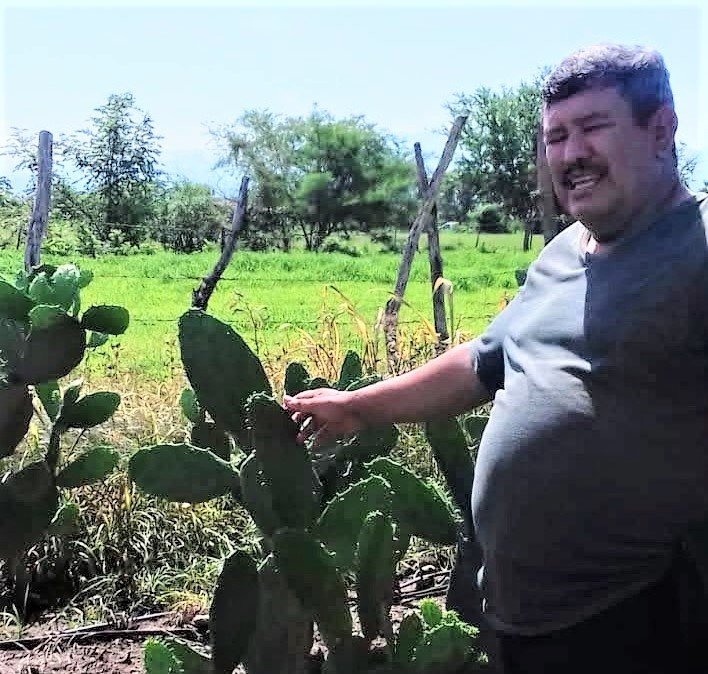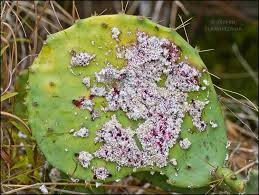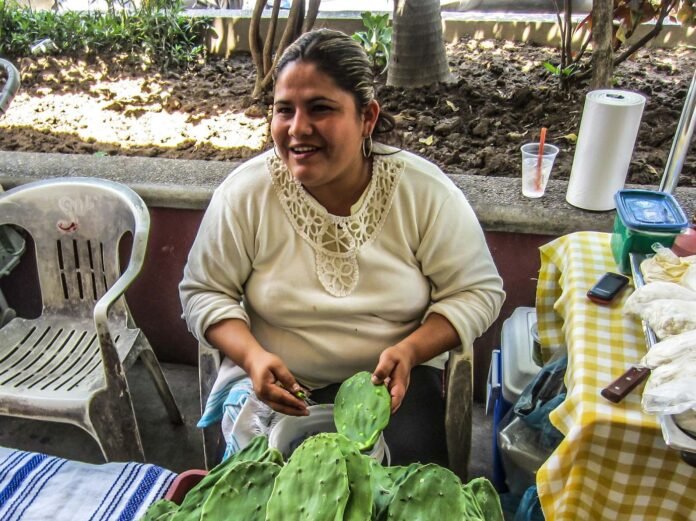Dulce Maria Morales sits at our daily market, removing the spines from nopal cactus pads (prickly pear cactus) to prepare them for sale. She and her family have been part of this market for years.
When I first came to Mexico, I asked her what to do with these lovely green pads. I have eaten it raw, in green juices, chopped as a salad with onions and tomatoes, mixed with scrambled eggs, steamed with rice and mole, and added to stews.
Eating it grilled is best if you do not like its slightly mucilaginous texture. The nopal fruit, called ‘tuna,’ comes in red-purple, white-green, and yellow-orange. When peeled and eaten cold, it is most refreshing.
Nopal pads and fruit are high in antioxidants, vitamins, and minerals and are a good source of fiber. Studies have shown the nopal may lower blood sugar, reduce insulin levels, reduce inflammation, and improve cholesterol.
The nopal cactus is important in the history of Mexico. Thought to have been domesticated over 9000 years ago, this cactus has been discovered as part of the Mayan and Aztec cultures. The symbols on the Mexican flag include the nopal cactus.
The first flag was used in 1821 during the War for Independence, which began in 1810. The name nopal comes from the indigenous Nahuatl language and means ‘tree that is of pads’ from the plant’s shape.
Over 7 million acres of land in Mexico are dedicated to growing nopal on either commercial plantations or family farms. The farming of nopal provides many subsistence communities with employment, food, and income, and most importantly, allows them to remain on their land. The approximate 8000 farms are mainly in the arid Central Valley.
My friend Rosa visited one of these farms a few hours north of Puerto Vallarta. Here, she met Pablo, manager of his family’s nopal farm. He has one hectare, about 2.5 acres, planted in 4200 plants, with an additional 6 hectares available for future growth.

Pablo and his workers cut after 11 am, so the cactus pads are dry. Otherwise, if they harvest before sunrise, the flavor of the pads is too lemony and prone to spoilage. He cuts a plant’s pads every eight days as they grow very fast in this hot, dry climate. They also grow year-round. Nopales have a shelf life of about 15 days, so shipping from farm to market is critical for fresh pads to be in good shape for customers.
In addition to producing nopal for consumption by people and animals, some of these farms work to grow an insect that lives on the cactus and can be dried and processed into the natural carmine dye known as cochineal. It takes about 80,000 to 100,000 insects to make one kilogram of cochineal dye, which yields shades of red, crimson, and scarlet
depending on the material to be dyed.
Mexico has had a monopoly on this dye since the Mayans used it to color wool and cotton fabric for clothing and blankets. After the War of Independence of 1812, this monopoly declined as other countries, specifically Spain, Guatemala, and North Africa, began their productions. Over the years, the popularity of cochineal has waned due to the invention of synthetic dyes.



Some towns in the Mexican state of Oaxaca still work with handmade textiles using this cochineal dye. Its use is beginning to increase as many commercial synthetic red dyes and food colorings are carcinogenic.
To see this natural cochineal dye, visit Casa Oaxaca on Calle Aquiles Serdan in Puerto Vallarta. They are growing a few nopales with cochineal insects to harvest and produce the cochineal dye for demonstration.


